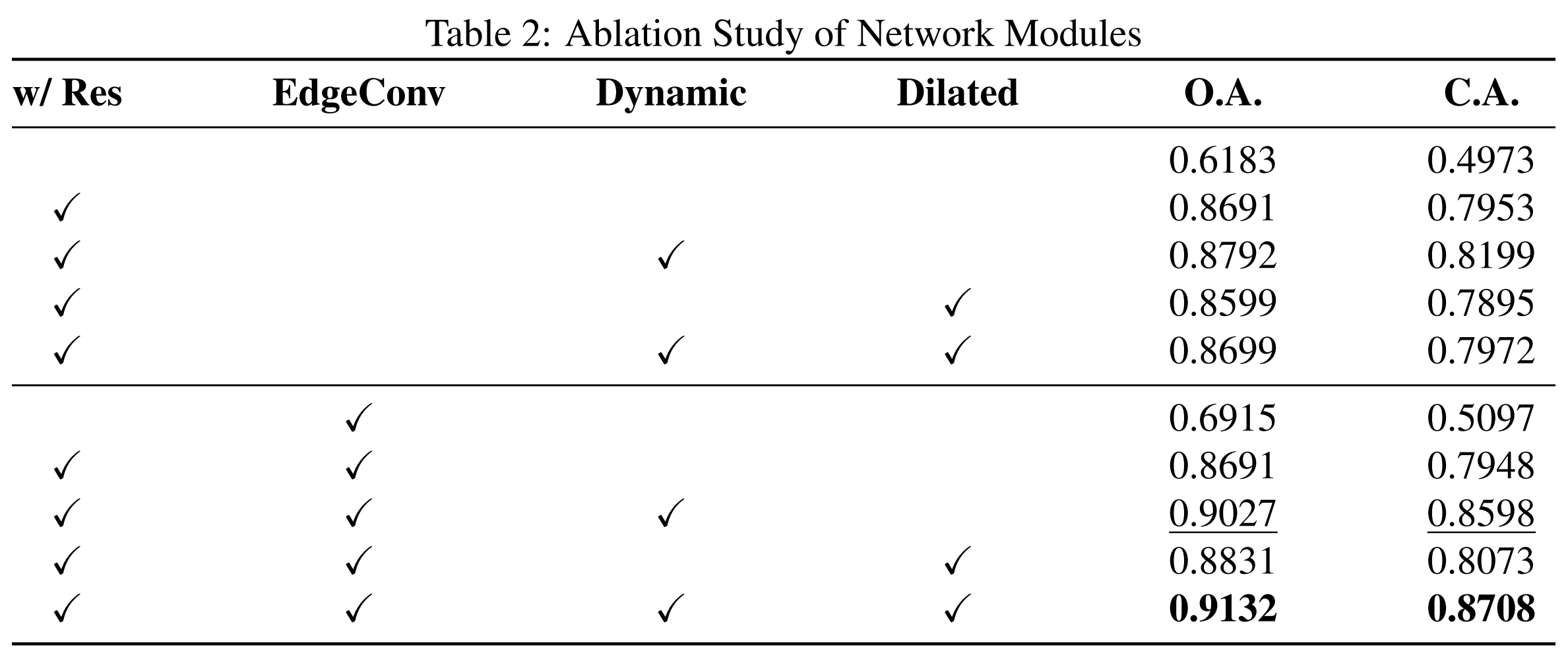Implementing 3D point cloud classification on ModelNet40 using a multi-layer GCN network.
4 main modules:Residual Block, EdgeConv Operation, Dynamic Graph Construction, and Dilation Convolution.
Due to network connectivity issues, it is recommended to download the ModelNet40 dataset locally and then upload it to the server using SCP or similar tools.
Link: https://shapenet.cs.stanford.edu/media/modelnet40_ply_hdf5_2048.zip
Extract it to the ./data directory to create the data/modelnet40_ply_hdf5_2048 folder.
My experimental environment includes:
- NVIDIA GeForce RTX 3090 GPUs
- CUDA Version: 12.1
You can set up the environment using the following commands:
conda create -n pointcloud python=3.9
conda activate pointcloud
pip install torch scikit-learn numpy h5py
# for DeepGCNs depend on your own version
pip install torch-cluster -f https://data.pyg.org/whl/torch-2.3.0+cu121.htmlFor experiment visualization, I use wandb for real-time monitoring in main.py. Additionally, I use tensorboard for visualization in main_tensorboard.py.
pip install tensorboard # TensorBoard
pip install wandb # Weights and BiasesThis section provides detailed explanations for the command line arguments used in the script. Each argument has a specific role and can be adjusted to control various aspects of the model training and evaluation process.
| Argument Name | Type | Description |
|---|---|---|
--exp_name |
str |
Name of the experiment. |
--model |
str |
Model to use. Options: pointnet, dgcnn, DeepGCN, GCN, EdgeGCN. |
--dataset |
str |
Dataset to use. Options: modelnet40. |
--batch_size |
int |
Size of the training batch. |
--epochs |
int |
Number of training epochs. |
--lr |
float |
Learning rate for the optimizer. |
--eval |
bool |
Evaluate the model if set to True. |
--model_path |
str |
Pretrained model path. |
--k |
int |
Number of nearest neighbors to use. |
--num_points |
int |
Number of points to use from each point cloud. |
--n_blocks |
int |
Number of basic blocks in the backbone. |
--n_filters |
int |
Number of channels of deep features. |
--dynamic |
bool |
Use dynamic adjacency matrix if set to True. |
--dilated |
bool |
Use dilated k-nearest neighbors if set to True. |
The codes for models PointNet, DGCNN, and DeepGCNs are from the respective repositories. The GCN model is based on the GCN repository. EdgeGCN is my implementation.
python main.pypython main.py --eval TrueEdgeGCN/
├── imgs/ # images shown on README
├── data/ # dataset
├── deep_gcns_torch/ # implement of DeepGCNs
├── pretrained/ # pretrained model
├── data.py # dataloader
├── util.py # IO toolkit
├── model.py # model PointNet&DGCNN
├── DeepGCN.py # model DeepGCN
├── GCN.py # model GCN
├── EdgeGCN.py # model EdgeGCN
├── main.py # main with wandb
├── main_tensorboard.py # main with tensorboard
└── README.md # READMEThis project is licensed under the MIT License.
The structure of this codebase is borrowed from DGCNN.

